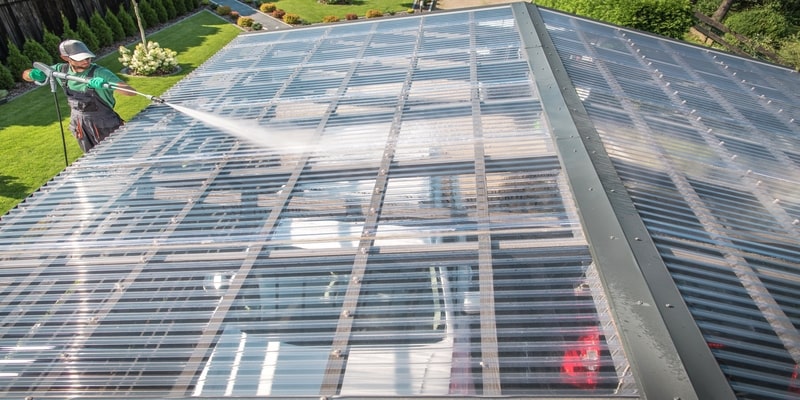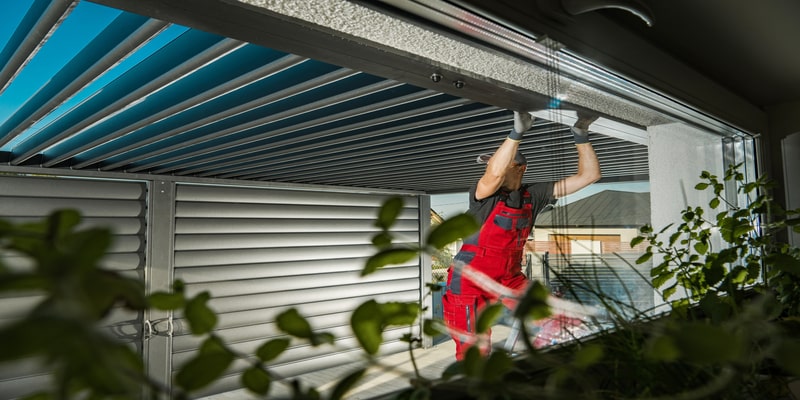How to Install PVC Corrugated Roofing Sheets

PVC corrugated roofing sheets are a great way to top sheds, carports, and outhouses. This resilient, flexible plastic repels rain, snow, UV rays, fire, water and will not deteriorate in the sun.
Not only this, but because they are so lightweight and easy to handle, they also tend to be the DIYers' choice – easy to install with the right fixings. Below we’ll go through just what makes this material such a popular roof covering, what thickness you need for your project and how to install it safely.
What Is a PVC Corrugated Roofing Sheet?
Polyvinyl Chloride (PVC) is one of the most extensively used thermoplastic polymers, produced by combining chlorine, carbon, and ethylene. Essentially, this makes PVC dense, exceedingly robust, and lightweight- a perfect material for building, plumbing, and other industrial uses. Furthermore, the material's strong chlorine composition renders it fire-resistant, which is why it has become so popular in a variety of sectors.
|
Lifespan: |
15-20 years |
|
Electric Insulator: |
PVC does not conduct electricity. |
|
Fire-retardant: |
LOI > 27% |
|
High Density: |
1.38 g/cm3 |
|
High strength: |
2.6 N/mm2 |
|
Low Cost: |
Economical |
How Thick Do My Roof Sheets Need to Be?
As important a first question as any, the thickness of your PVC sheet will ultimately determine how strong it is or, more to the point, how resistant it will be to breaking under strain. With that being the case the best way to determine the thickness of the sheets required will be to look at what you need them to do. Your application.
For less intensive projects, porches, coverings for sheds and other smaller outbuildings a thinner sheet, 0.8mm, for example, may be suitable. However, as the value of what your sheets are protecting increases so should the thickness. Carports and roof lights are the perfect examples. Not only do they tend to be larger and higher up (subject to more rain and wind) they also present a more costly risk should they fall. This being the case a thicker sheet would always be more ideal.
How to Install PVC Corrugated Roofing Sheets
Whilst most corrugated PVC roof sheets are appropriate for roof pitches ranging from 5° to 90°, the first step is always to check that the sheet you want to use is compatible with your roof – whether that be a lean-to, porch or carport. It is unlikely you will need planning permission if you are just replacing a current roof covering with PVC sheets, however, if you are building something new or making major alterations we recommend you check with your local planning authority.
Remember, to guarantee water run-off a minimum slope of 5° is required, although a slope of 10° or greater is preferable.
Sizing Sheets
- Position the sheets loosely on the roof and with a felt tip pen trace the hole placements and any necessary cuts.
- The sheets should overhang the roof by 60mm and be wide enough to cover the barge board on the side to allow rainwater to drain down into the gutters.
- When cutting, approach at a shallow angle with minimal pressure and ensure the sheet is clamped to reduce vibrations. We recommend that you use an angle grinder with a metal slitting blade, or a small tooth saw.

Drilling Sheets
- Always make sure to pre-drill prior to securing your PVC Corrugated Roofing Sheets with the holes being larger than the fixings to allow for expansion.
- Gently drill sheets one at a time using a masonry bit with a low-speed drill.
- At least 5 fixings should be used for each support throughout the breadth of a sheet.
Securing Sheets
- Insert wall flashing at the slope's base.
- Ensure it is firmly secure and watertight.
Fixing Sheets
- Place foam eaves fillers beneath the sheets at all support points. This will not only minimize roof chattering but will also provide support for the sheets while they are being repaired.
- Place the caps on the screws after ensuring that the fastening screws are properly fastened.
- If any sheets must be linked end-to-end, leave at least 150mm of overlap if your roof has a 5-degree slope and 300mm if it has a 10-degree slope.
Final Thoughts
It’s easy to see why so many DIYers are choosing PVC. Not only does it efficiently block solar heat far more successfully than sheet metal, but it is also incredibly lightweight, durable and DIYer friendly. Furthermore, PVC Corrugated Roofing Sheets are very waterproof and provide great light transmission. All in all, they provide a lighter, shatterproof alternative to glass that is significantly safer.
For more information on our range of PVC corrugated sheets, please feel free to get in touch with our award-winning customer service team on 01295 565 565 or direct using our live chat below. We’ll be more than happy to help with any questions or queries.